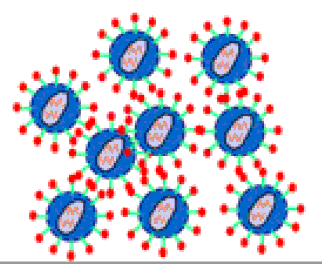Papers in the Biological Sciences

Qingsheng Li Publications
Document Type
Article
Date of this Version
3-27-2009
Citation
Science Vol 323 27 March 2009
Abstract
In the early stages of viral infection, outcomes depend on a race between expansion of infection and the immune response generated to contain it. We combined in situ tetramer staining with in situ hybridization to visualize, map, and quantify relationships between immune effector cells and their targets in tissues. In simian immunodeficiency virus infections in macaques and lymphocytic choriomeningitis virus infections in mice, the magnitude and timing of the establishment of an excess of effector cells versus targets were found to correlate with the extent of control and the infection outcome (i.e., control and clearance versus partial or poor control and persistent infection). This method highlights the importance of the location, timing, and magnitude of the immune response needed for a vaccine to be effective against agents of persistent infection, such as HIV-1.


Comments
U.S. Government Work